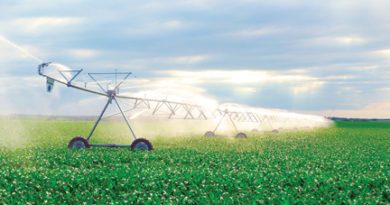Storm Q – pfffft
We were warned – and warned again – that Storm Q was preparing to bury Southeast Nebraska under 18-plus inches of powder last week. Jovial excitement ran the gamut as people anticipated the approaching front, watched it trek across the nation’s four corners region, through Kansas and finally Nebraska – snowmageddan was on its way.
Even The Weather Channel’s Jim Cantore made his way to Lincoln to report on the monster storm finding hilarity in the fact that he was reporting on Storm Q from Q St. in downtown Lincoln. Greeted by a host of fans, the weatherman was forced to tell viewers that although Lincoln was on track to get over a foot of powder, received only six inches Thursday. It has been 20 years since the capitol city has received snow measuring in the double digits.
It was the same story here in Thayer County. Why the last minute change? Blame it on the dry slot, the weatherman said. The dry slot is a big wave of dry air among the clouds and no moisture means no snow. So while the front appeared in all its threatening glory on the outside, inside was a mass of fluffiness that couldn’t hurt a fly.
The six inches that did fall Wednesday night into Thursday had its fair share of drifting forcing cautionary conditions on roadways and forcing folks outside to clean off driveways and sidewalks. City and county workers moved the snow with little effort due to its lack of moisture content and had roads opened and cleared quickly. School was cancelled Thursday and kids found their way outside to build snowmen and snow forts.
The winter storm did pack a wallop in Kansas, burying that state to the south in 18 inches of snow closing major highways, schools, businesses and even the airport at Kansas City. Ice was also a factor in southern Kansas.
But it was a pretty normal snow event for this area; however, was by no means a drought buster. In fact, according to the National Weather Service’s climate prediction center, the nation’s worst drought in decades is likely to intensify across the already drought-stricken Great Plains, Southwest and Rocky Mountains for the next several months.
Storm Q helped ease the dryness in portions of the central US, but much more moisture is still needed to break the drought say meteorologists at the center. According to the National Drought Early Warning Outlook released last Thursday as Storm Q hit, “the 2012-13 drought has serious implications for agriculture, navigation, recreation and municipal water supplies, costing the nation at least $35 billion in economic losses.”
According to the National Climatic Data Center, if the drought continues as forecast, its economic costs could surpass the previous costliest drought in US history, $40 million in 1988-89.
In its 90-day forecast statement, temperatures in the months of March, April, and May will be warmer than average across the lower 48 states with the exception of the Pacific Northwest and Alaska where it will be cooler than average.
Precipitation is expected to be lower than average for the West, Gulf Coast and Southeast, while the upper Midwest and Great Lakes will see more rain than average. Nebraska has a 50-50 chance to go either way, although dwindling snowpack in Colorado and Wyoming could have an impact on water in the area. Spring and summer rains will be critical.




